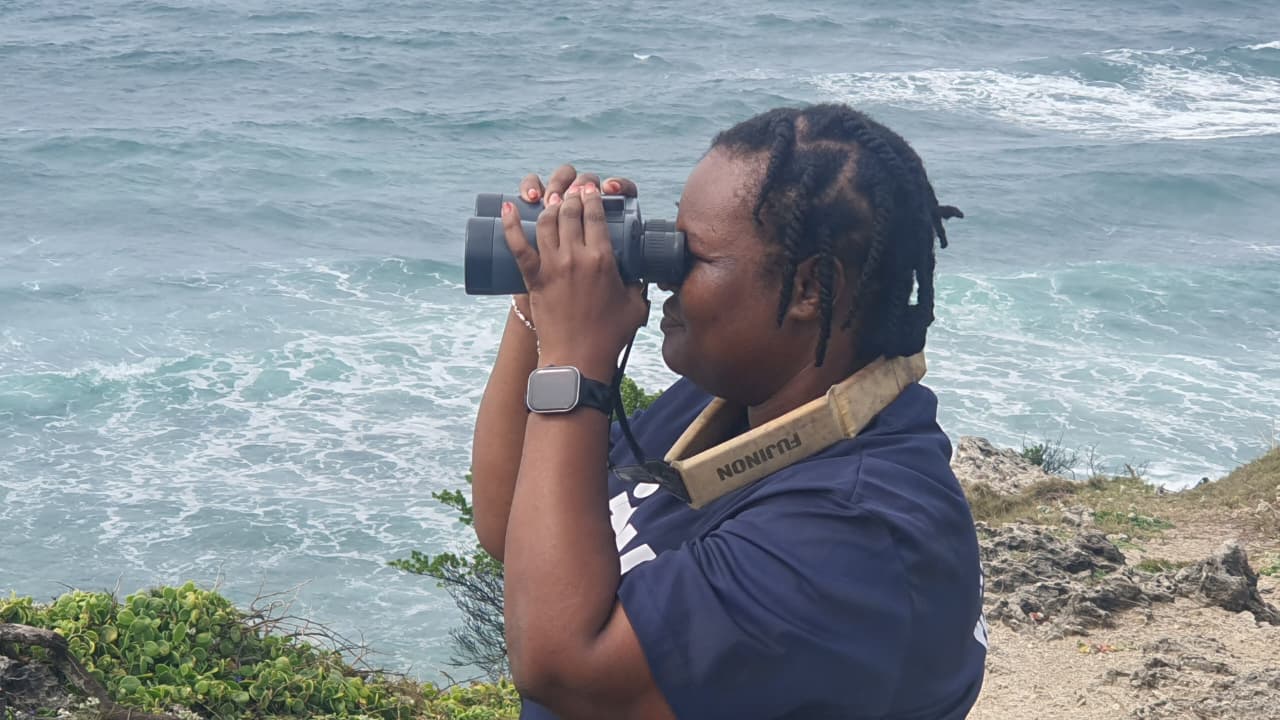
IFAW programme officer for Marine Conservation, Lillian Mulup, tries out binoculars/Gilbert Koech
Marine experts are urging greater investment in modern technologies to monitor and protect marine mammals on Kenya’s coastline.
The International Fund for Animal Welfare said more financial resources are needed to strengthen research and data collection.
“We need resources to put people out there to study, to deploy equipment in the ocean, to collect data, and to empower local communities,” IFAW marine conservation programme officer Lillian Mulupi said.
She said long-term monitoring is critical to understanding marine mammals’ behaviour, habitats and population trends, as well as the impact of climate change and human activity on their ecosystems.
Species such as dolphins, whales, dugongs and sea turtles require safe waters and migration corridors.
While some are protected in gazetted areas like Watamu Marine Park and Kisite Mpunguti, large stretches of Kenya’s coastline remain under-studied.
Mulupi said crucial insights can be derived from technologies such as acoustic and passive monitoring, drone surveys and aerial observations.
Acoustic monitoring records vocalisations and clicks, while passive devices detect presence over extended periods.
“These methods help us know if animals have been in the area day or night,” she said.
The biggest challenge is cost, however. “All these technologies require significant funding to operate effectively,” Mulupi said.
Michael Mwangombe, program manager at KMMREC, said they conduct land-based monitoring, focusing mainly on humpback whales, which are easily visible from higher ground.
These surveys complement citizen reports and research carried out on tourist boats.
Dr Mohammed Omar, senior principal research scientist at the Wildlife Research and Training Institute, said Kenya must increase its marine protected areas. “Currently, all combined, they cover less than one per cent of our waters,” he said.
“Yet, under the Montreal Global Biodiversity Framework, we committed to protecting 30 per cent by 2030. That leaves a 29 per cent deficit.”
Omar said WRTI is working to establish a centre of excellence for coastal and marine research to build national capacity.








![[PHOTOS] Elgeyo Marakwet landslide victims arrive in Eldoret for care](/_next/image?url=https%3A%2F%2Fcdn.radioafrica.digital%2Fimage%2F2025%2F11%2F425460d9-7ff1-4975-8a1f-cd0aaefb7812.jpg&w=3840&q=100)



